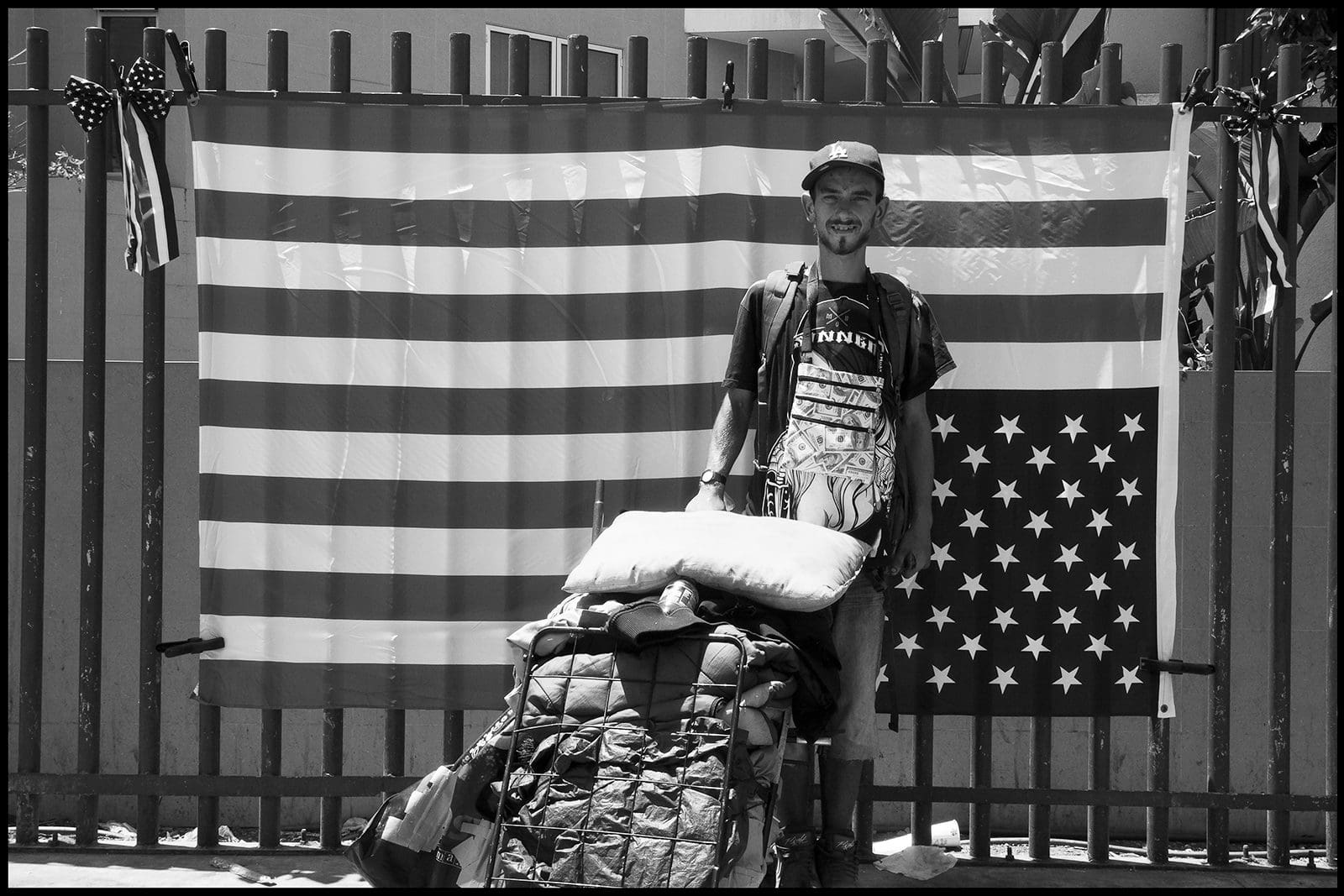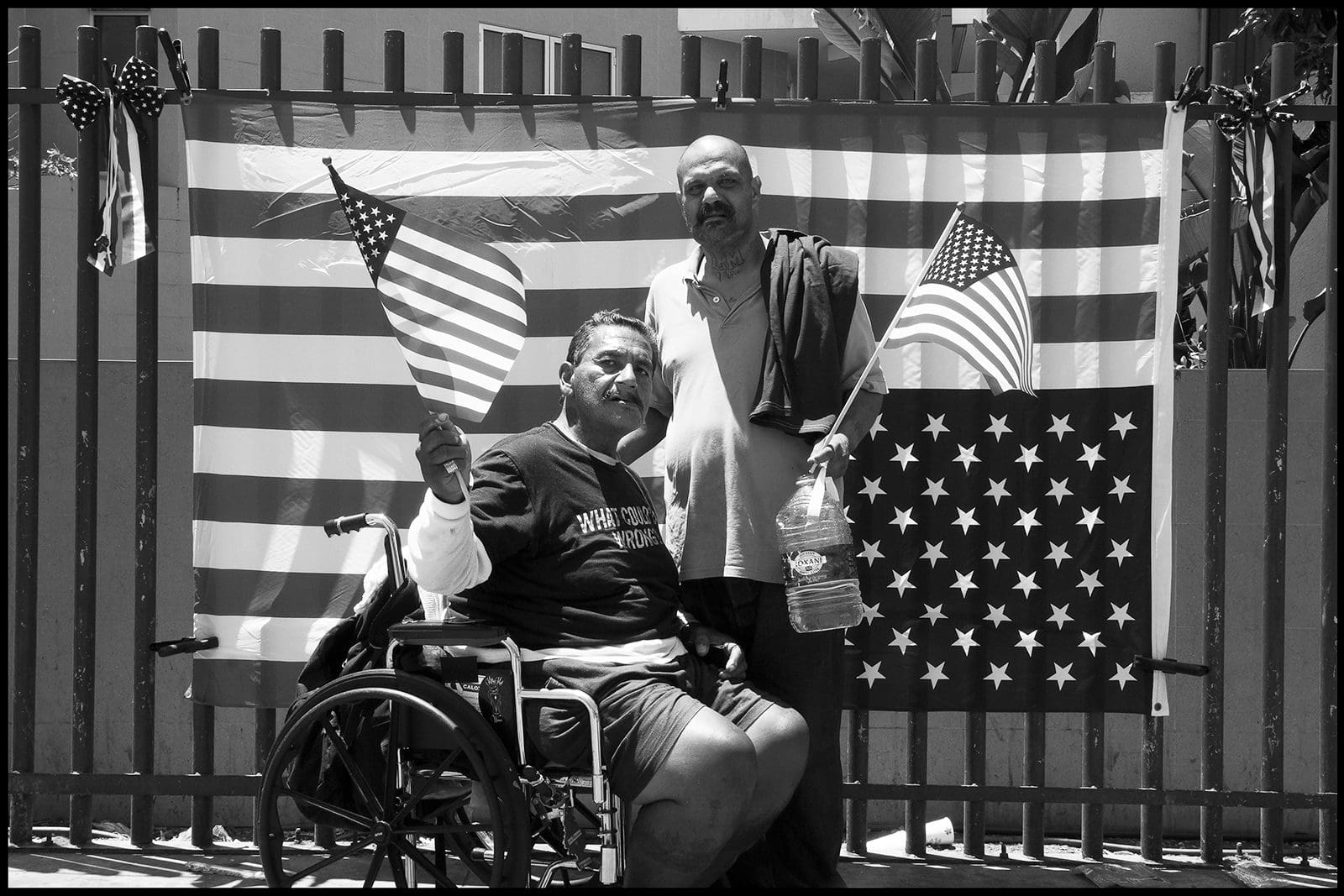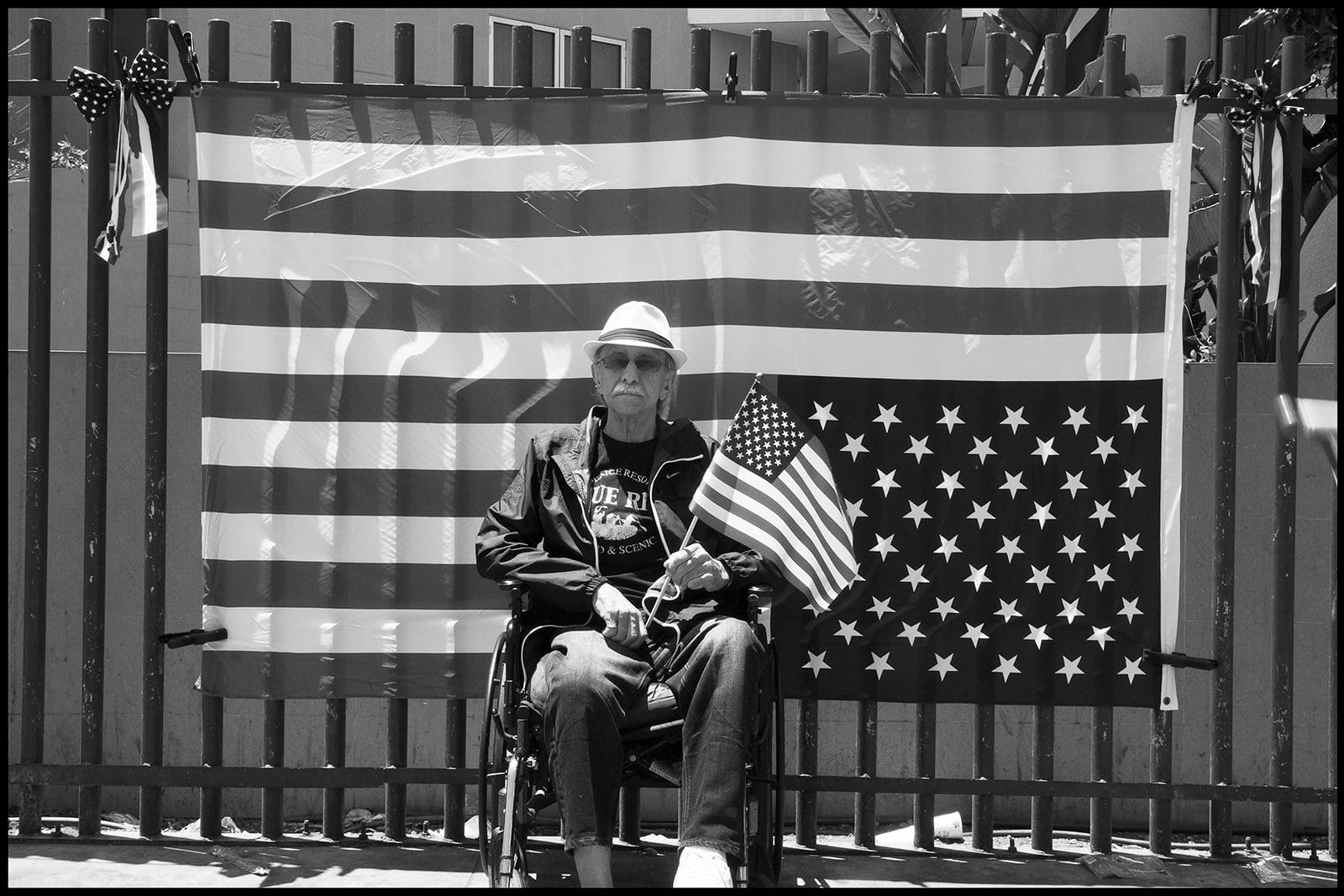
Approximately 17,000 homeless people, the largest concentration of homeless in the United States, live in Los Angeles’ Skid Row neighborhood on any given day. LA County tops the nation with nearly 70,000 chronically homeless people, so tent cities are common sites under freeway overpasses, and along streets in neighborhoods both rich and poor.
It is unfortunately all too easy for the homeless to be dehumanized in the eyes of their housed neighbors. There is a level of separation that is created as folks drive by in cars, cross the street to avoid someone asking for help, or demand they move elsewhere.
On July 4, 2016, a National Day of Celebration, I drove to Skid Row to document this dire situation. To serve as a backdrop, I hung a large American flag upside down. The upside-down flag is a symbol of distress. While I was hanging the flag, two men approached me. One was in a wheelchair. They were army veterans who asked me if I knew the symbolism of the upside-down flag. I responded, “Yes, just look around, we are in distress.” Having established that mutual understanding, they asked if they could be the first ones to pose.


Since that day, the tragedy of the homelessness crisis has only worsened – exacerbated by the proliferation of street drugs such as fentanyl and methamphetamine, along with the Coronavirus pandemic which cost many their livelihood. It’s a complicated issue that intersects across numerous social issues: mental health, addiction, cost of living, economic opportunity, and income inequality. Los Angeles, in particular, has one of the greatest gaps between the haves and the have-nots in the entire world.
Another one of my first volunteer subjects was dressed in a flag bikini. She asked if I would buy her a bottle of water. I gave her a dollar after I photographed her and she left. She quickly reappeared with a bullhorn and announced that I was offering a dollar to each person willing to pose. Soon a line formed around the block. One of my favorite subjects was ‘Reefer Girl’ who was smoking a joint and encouraging others to pose.

Over the course of one and a half hours, I gave away $100 and shot four hundred pictures. The images reveal a cross-section of Skid Row residents of all ages and races: kids playing, proud vets boasting of their service, couples idling, fathers and sons conversing, and individuals strutting as fashion statements I’d never seen before. They seemed lost, happy, angry, pensive, and humble. It was a reminder that homelessness doesn’t define a person. Their life, circumstances, and perhaps forces beyond their capacity to control may have brought them this fate, but each person has a story that deserves to be shared.
When I returned two weeks later to distribute the photographic prints I had promised to some of my subjects, I found many of them still present, although some had disappeared. A fitting coda is symbolic of a tragic cycle of poverty.
The photos can be viewed in a small book of images, titled “We Are Not OK”, as well as a short film. I continue to work on this project by taking pictures of homeless and housed veterans.
BOOK FOR SALE | We Are Not Ok: Photos from Skid Row LA – ©Ave Pildas
https://www.smallphotobooks.com/shop/we-are-not-ok-photos-from-skid-row-la
Ave Pildas celebrated the birthday of the United States of America with homeless people at the Skid Row center in Los Angeles, CA

